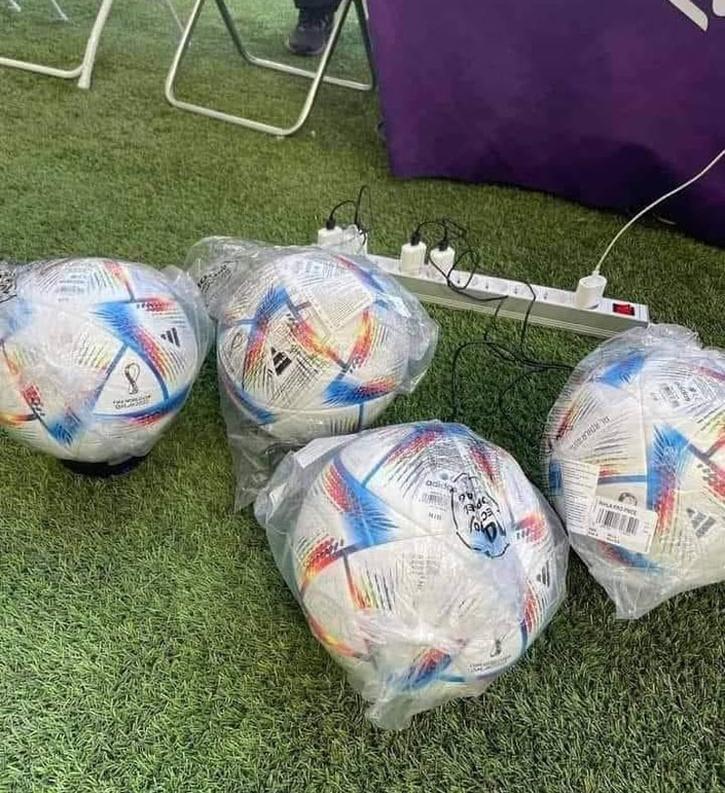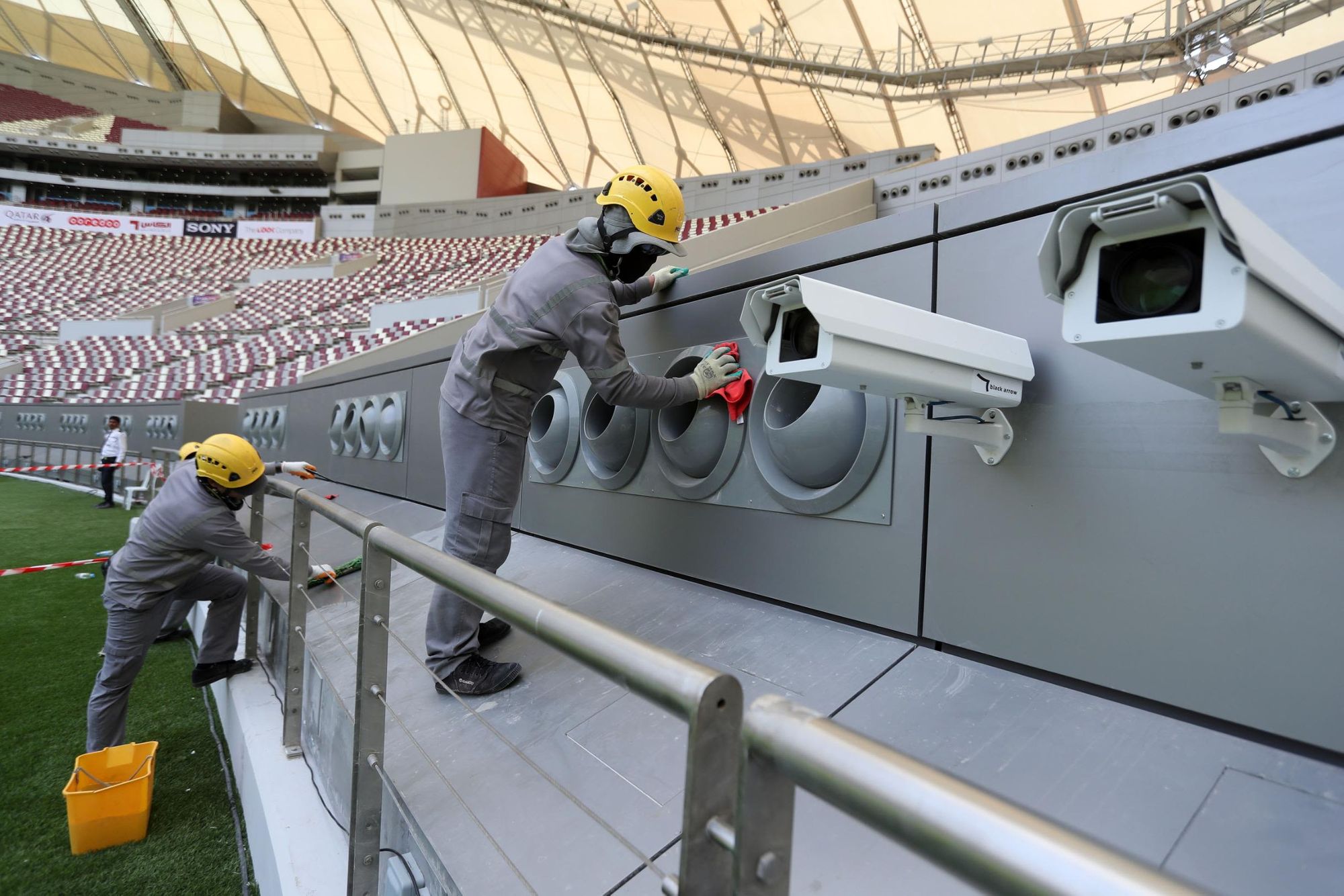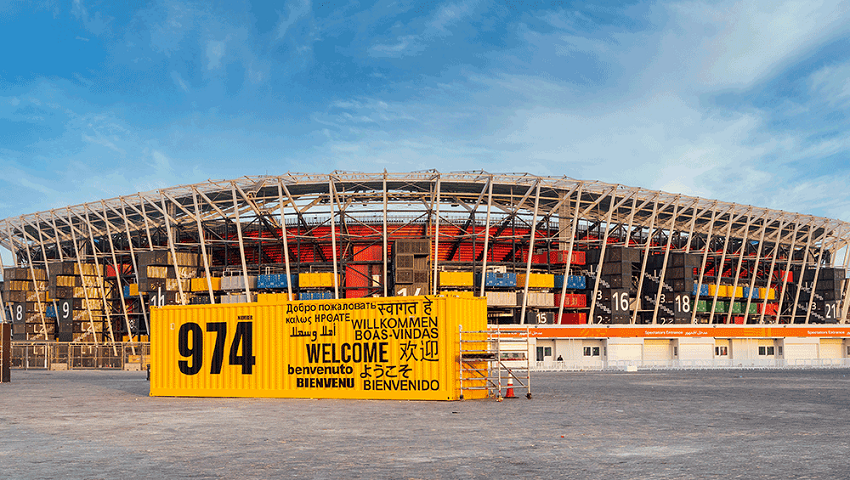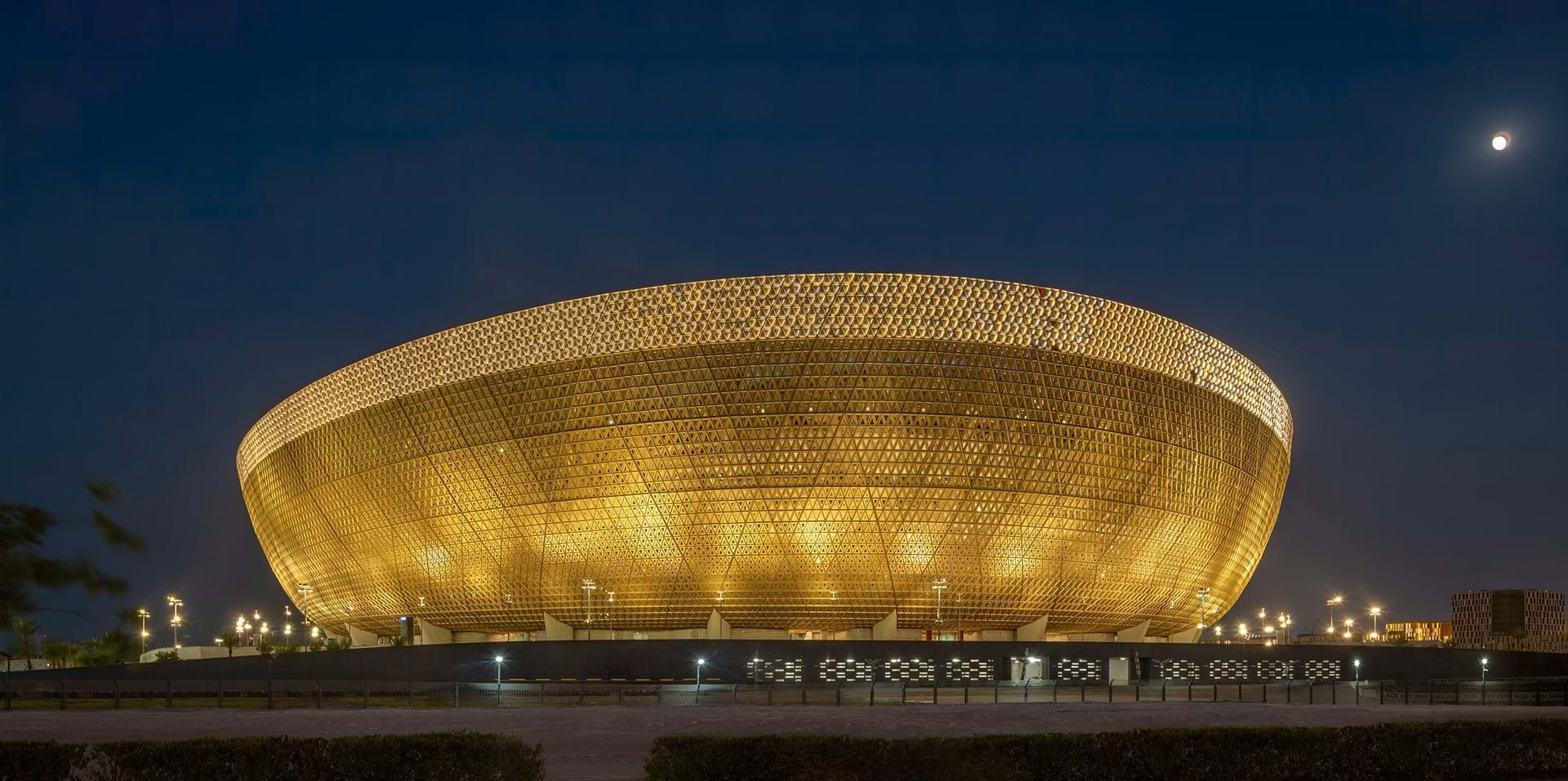Qatar-ing Edge Technology
Sorry, bad pun.
Another four years has rolled around. Its Fifa World Cup time. As of writing, the second-round knockout stage has just completed, after Portugal stuffed the Swiss 6-1 this morning. They will be joined by France, England, Brazil, Argentina, Croatia, Netherlands, and the surprise package Morocco in the quarter finals.
Plenty has been written about this tournament, which was controversial from the get-go. From the spectacularly dodgy awarding of the tournament to Qatar, the blatant corruption, the modern-day slavery (and deaths) of the immigrant workforce, and the disgusting wastefulness of resources used to build the stadia. All marketed to us without a trace of shame or irony.
But... this is a technology blog, so let's talk about some of the tech and innovations that we'll be seeing during this festival of football. We're not calling it Soccer here either!
The Ball
The official match ball (called Al Rihla - Arabic for The Journey), is made by Adidas, and contains a motion sensor within. This sensor will report precise location data on the ball 500 times per second, helping referees and officials make more precise calls.
The ball will be used in all of the tournament’s 64 matches and will feed information back to a data 'nerve' center, which officials can use to track statistics and monitor game play. Every stadium will have 12 dedicated cameras to monitor the position of the ball, and ... it needs to be charged before the game :)

Video Assistant Referees
Referee decisions are never far from controversy. But in Qatar, officials will try to minimize the controversy by using video assistant referees, which use algorithms and data points to help on-field referees make accurate calls. The system will rely on tracking cameras mounted underneath stadium roofs to track the sensor-filled ball and up to 29 data points on each player’s body, at 50 times per second.
The data points tracking players’ limbs and ball location will be fed into an AI system, helping referees make accurate calls on penalties, and potentially contentious incidents of the offside rule. An automated alert will alert match officials inside a video 'bunker' room, who will then validate the decision before informing the referee.
Qatar is Hot
This is one of the first world cup tournaments to be held this time of year - they are normally held around May, June or July. Holding in December allows for cooler temperatures in Qatar, but not cool enough. So, they have put cooling in most of the stadiums.
Using solar-powered energy, outside air is cooled and then distributed through grills in the stands and large pitch-side nozzles. It will create a cool bubble inside the stadium, where sensors will help regulate temperatures. Using insulation and a system called spot-cooling will also allow cooling to take place only where people are located. Stadiums will be kept between 17 to 24 degrees. A stadium only needs to be cooled two hours before an event, which significantly reduces the venue’s energy consumption compared to other methods.

Lego Stadium
The brightly-coloured, 40,000 seat Stadium 974 at Ras Abu Aboud, an industrial district of Doha, is perhaps the most innovative of all the stadia that were built.
To avoid building venues of limited value to the local community, Qatar has ensured that its stadiums were designed modularly when possible. Stadium 974 is the first fully de-constructable stadium in the history of the World Cup. Inspired by a LEGO set, and constructed using repurposed shipping containers modified to hold seating, bathrooms, and other elements, the entire building can be dismantled in hours at the end of the 2022 tournament. By then, the structure will have played host to just seven matches. The stadium can then be reconstructed anywhere in the world, or repurposed to create smaller venues. The ‘974’ denotes the number of shipping containers used.

World Cup 2022: UHD HDR
OK, here is some techno-babble, which I didn't write, I copied it and I vaguely understand it...
The UHD / HDR standard will be applied to all 64 matches as a single unified layer from capture to transmission. This advance will streamline the ability to colour manage transformations between HDR and SDR.
FIFA have picked Hybrid Log Gamma (HLG/ BT.2100) as its HDR flavour for the World Cup 2022 in Qatar saying that is has matured as a standard and is now widely used in the industry.
The standard 4K frame rate is 50fps with HD HDR capture at 150fps for the higher frame rate cameras, all using HLG.
A workflow for standard dynamic range (SDR) will hang off this using closed loop monitoring in which the HDR source is down-mapped to SDR at the end of the signal chain.
The highest technical specs offered for multilateral feeds and selected isolated cameras is 12G-SDI HDR BT.2020, 2160p50, ESF/CSF with up to 16 embedded audio channels (as eight AES/EBU stereo channels, SMPTE-2082-10).
Broadcasters can use a web-based multi-viewer control panel to switch between available feeds on the router, regardless of whether they have an on-site IBC presence or not.
The cloud-based media server FIFA MAX (Media Asset Exchange) is designed to hold 6000 hours of content, all of which is accessible to broadcasters. The primary native media format of the media server is XAVC-I 1080/50p. This system supports ingest and delivery in HDR, while the preview for browsing proxies is SDR.
So many acronyms.
World Cup Broadcast
Each match will be covered by 42 cameras and include super slo-mo and ultra slow motion units. An array of handheld cameras will offer fan coverage, team arrivals and player interviews.
The main feed (called Extended Stadium Feed) contains pre-match, in-match and post-match features and follow a set running order so that broadcasters know precisely where they can insert their own elements. Production of each match ends with a review show. All the content is made available to rights holders as either ready-to-use edits or as raw content for them to tailor their own coverage.
An additional eight crews will travel around the country filming various features, documentaries, human-interest stories and the like. Filler in other words.

World Cup 2022: FIFA Player App (Live Data Harvesting)
Players will be able to get insights into their on-field performance through a new FIFA Player App. Developed with professional footballer’s organisation FIFPRO and trialed at the FIFA Arab Cup 2021, the App is being used for the first time in Qatar.
Players expressed an interest in assessing their individual player-performance data shortly after each match. The data is captured by a FIFA team of football performance analysts and combined with tracking data. Physical performance metrics are collected via an in-stadium tracking system consisting of multiple cameras located around the pitch. Metrics include distance covered at various speed thresholds, number of actions above 25km/h, and maximum speed, all displayed on positional heat maps. There are also ‘football intelligence metrics’ that include analysis of the phase of play, line-breaking events, receiving locations, and pressure being applied to the player in possession of the ball.
This data is then synchronised with match footage to enable players to watch all key moments of their own performance, using different camera angles. Additionally, players can view and share on social media multiple action photographs of themselves taken during key moments of each World Cup match.
And finally
The Alan Turing Institute in Britain has created an algorithm to predict which team is most likely to win the World Cup. Their algorithm is based on a data set from GitHub, a website for sharing and collaborating on computer code, which tracked the results of every international football match since 1872.
They ran the model 100,000 times.
The results, according to the institute: Brazil won the tournament in roughly 25 percent of the simulations; Belgium came out the victor roughly 18 percent of the time (that didn't age well, they got knocked out in the group stage) and Argentina came out on top at a little under 15 percent.
Deano's pick .... Brazil.
